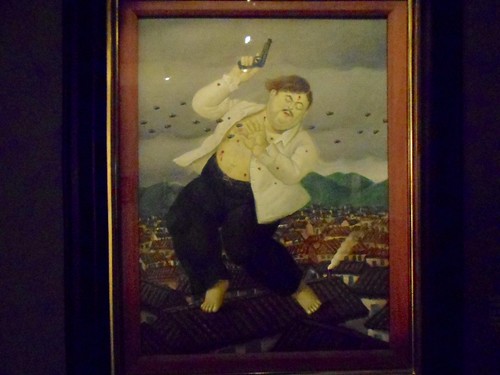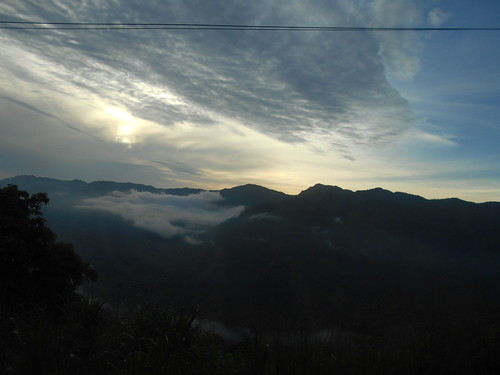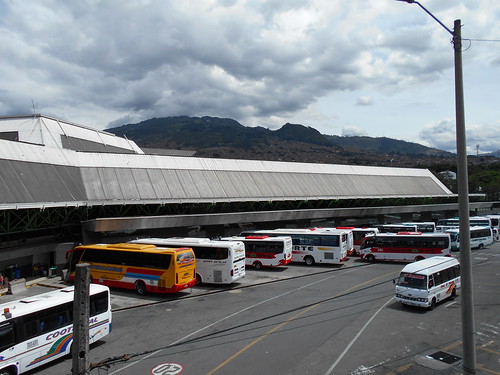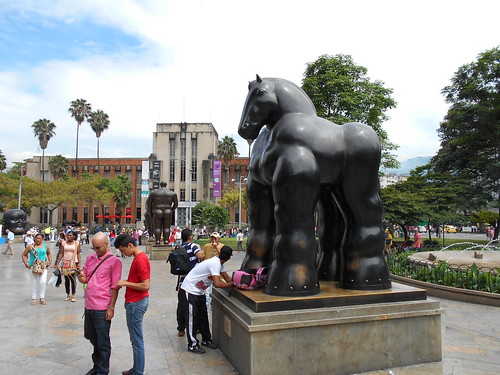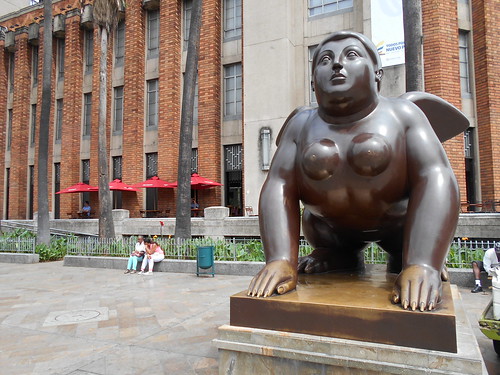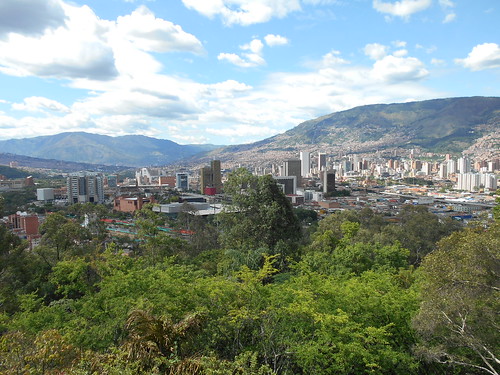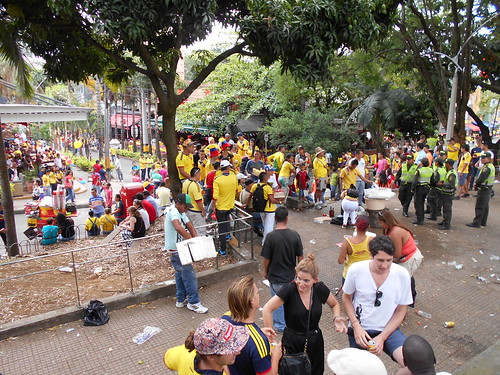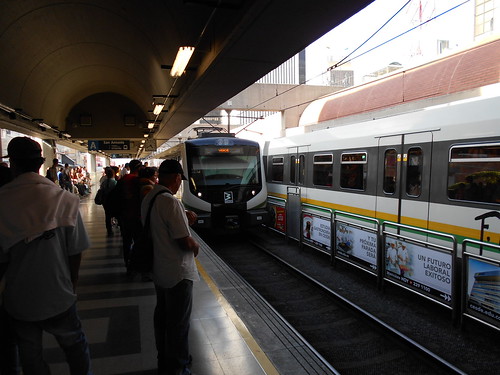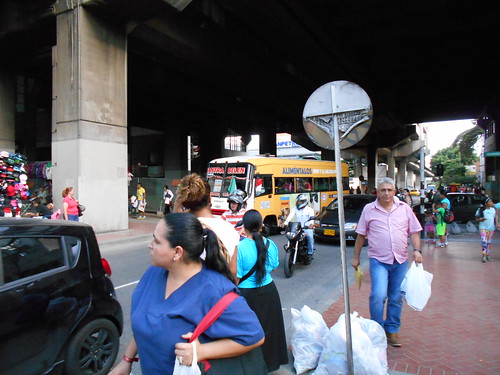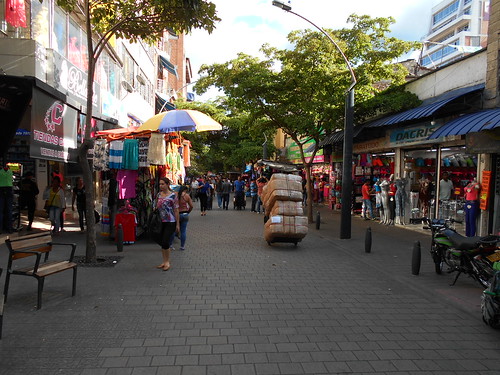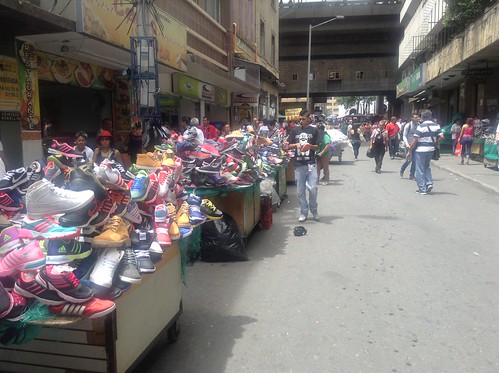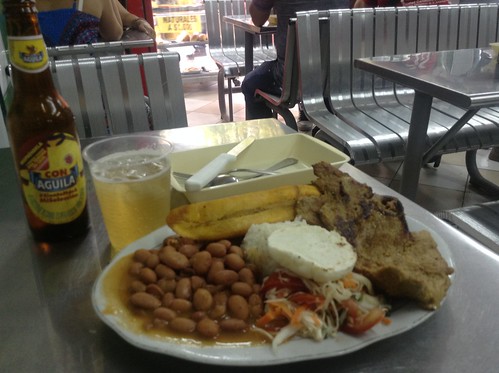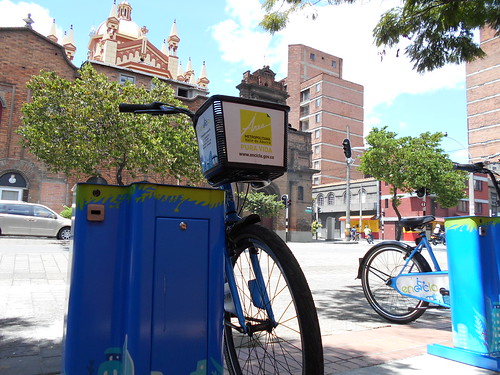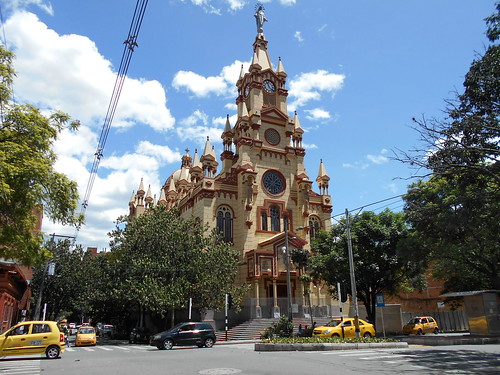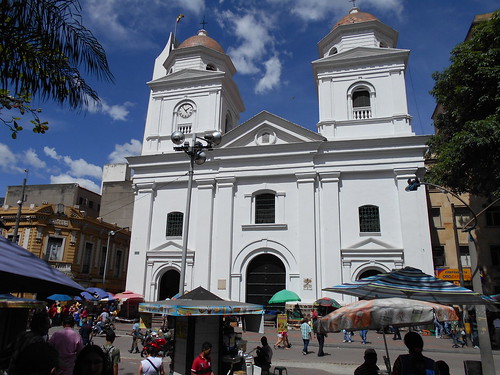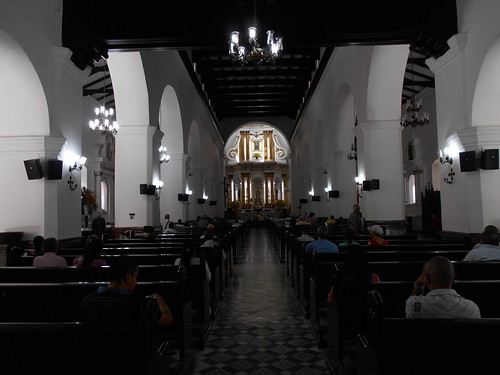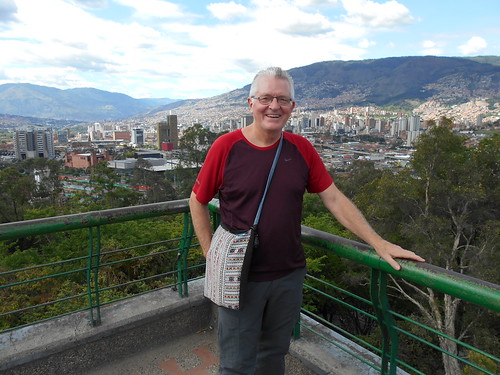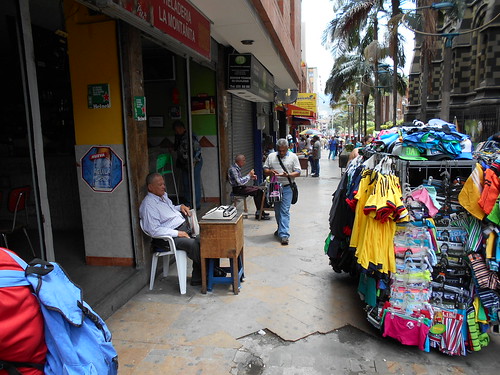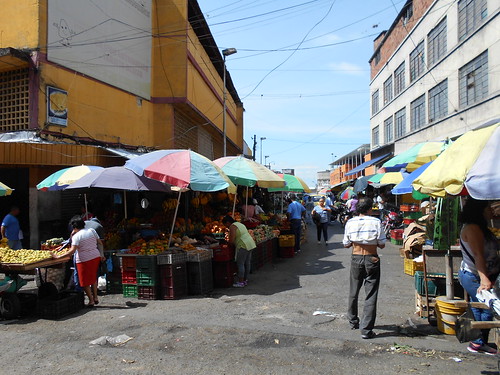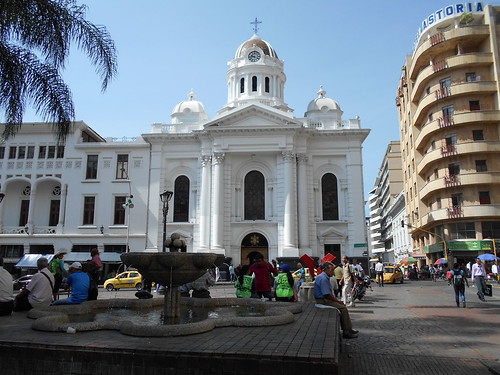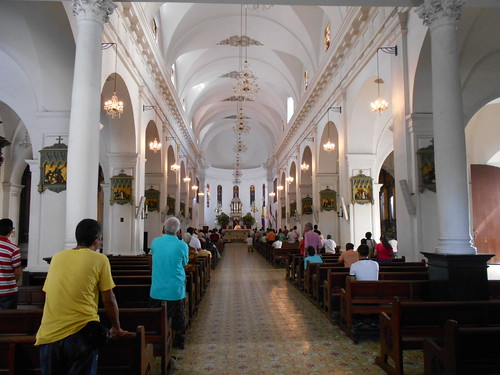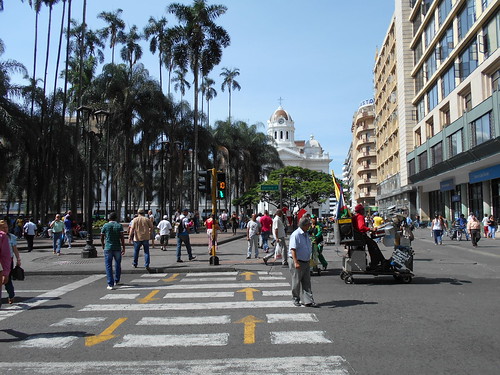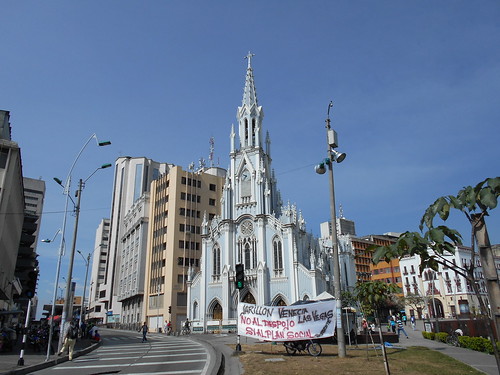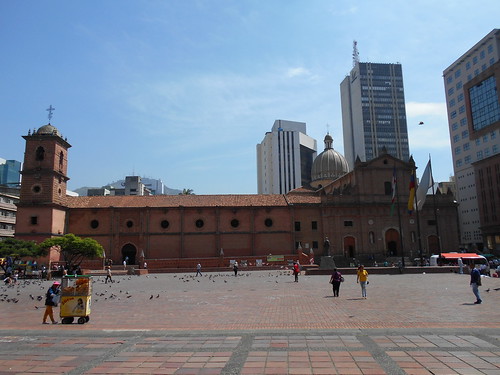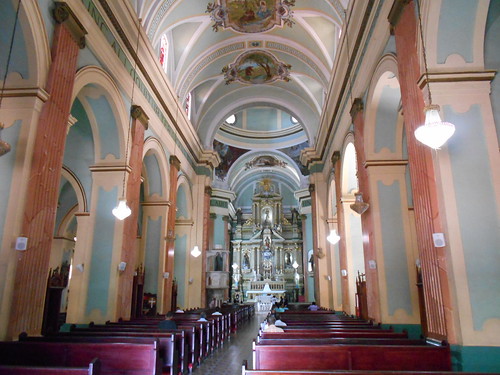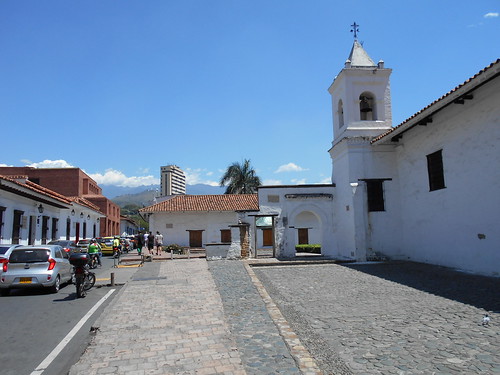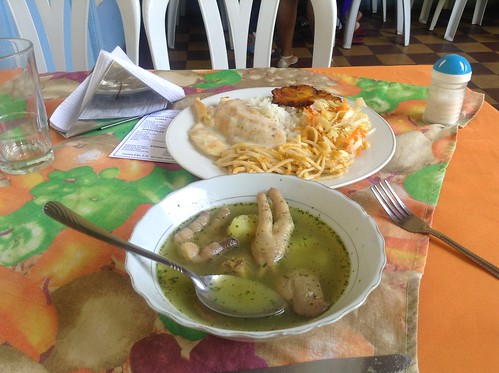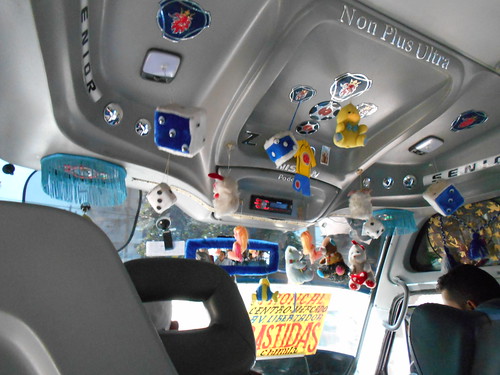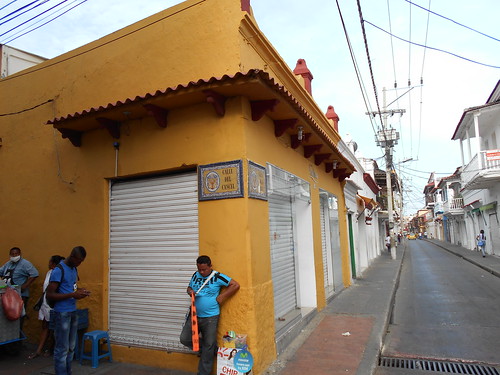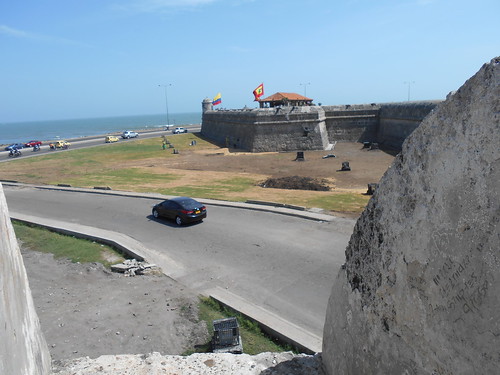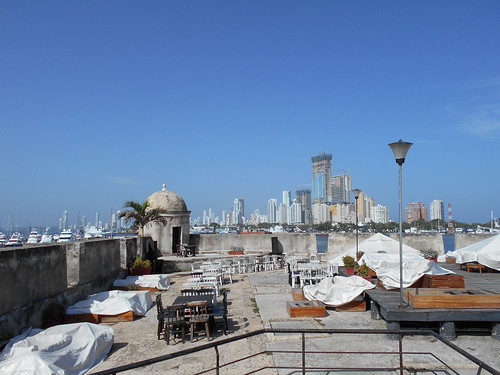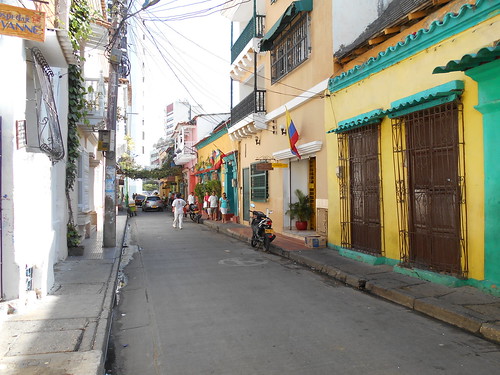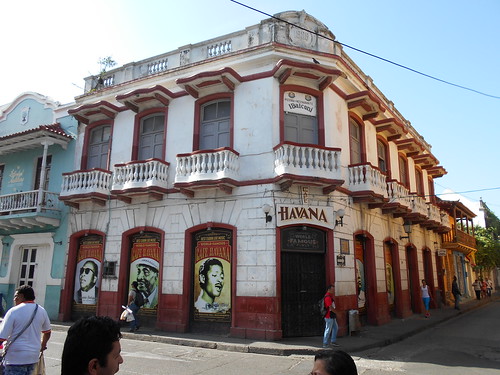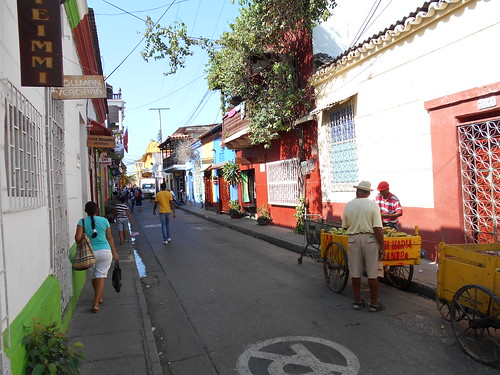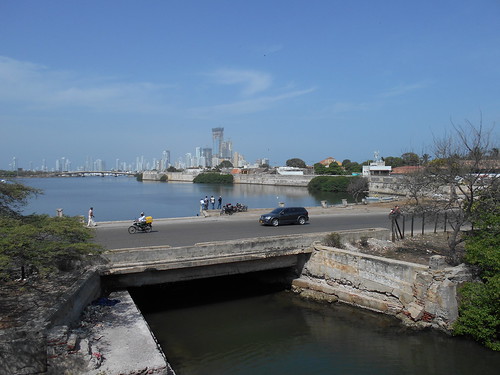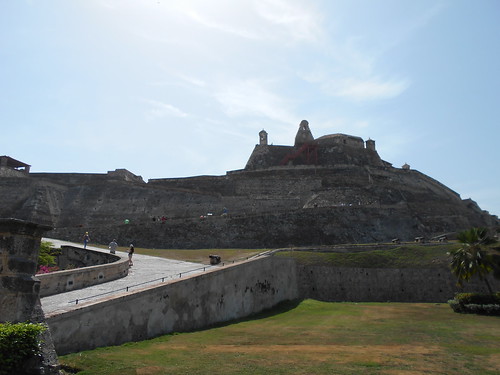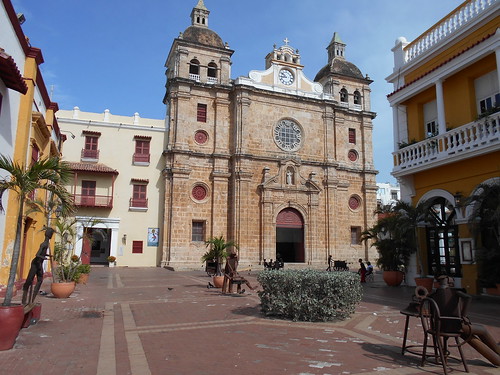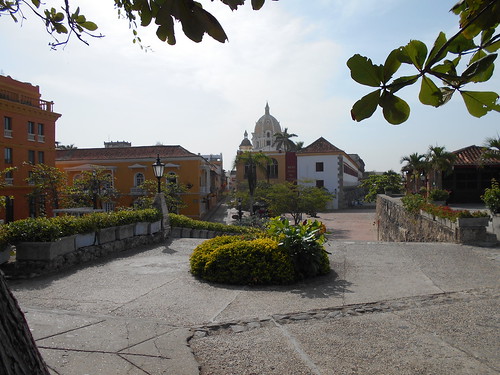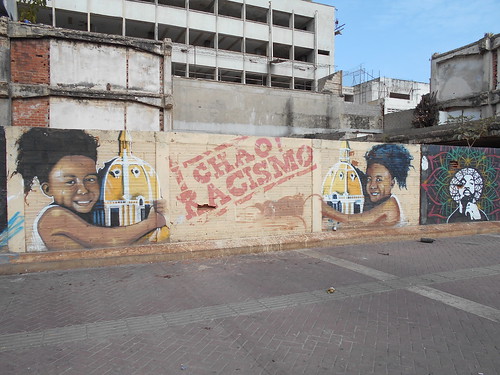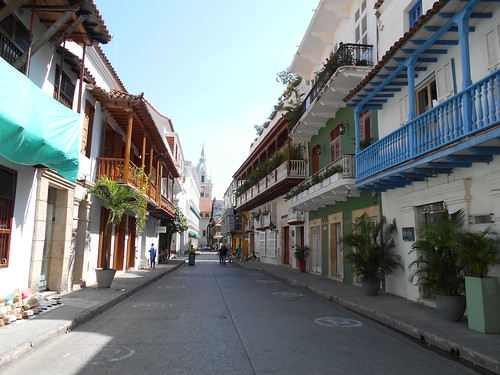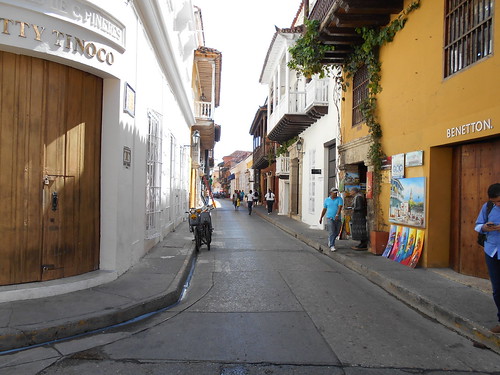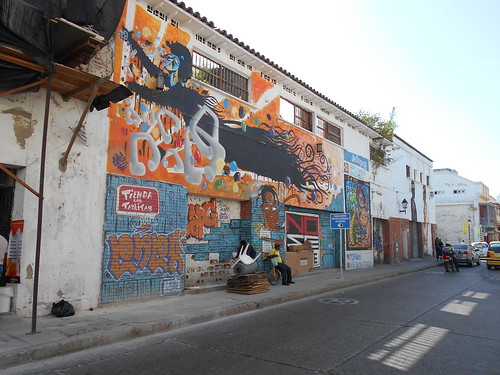Now that I am completing my visits to both Medellin and Cali, I have not experienced any travel problems. I have also seen a very heavy and visible police presence by their wearing of the luminescent green vests practically on every street and public transportation.
Fernando Botero's painting of Pablo Escobar's assassination by government forces in 1993, portrays the loosening of controls the narco-terrorists had on major areas of Colombia, especially Medellin and Cali.
Early morning found me on the bus to Medellin just as the sun was coming up. After a stop for a breakfast of apollo empanada and two coffee con leches, our bus continued up the mountain pass that we topped at about 2700 meters. Lots of steep hills and valleys dotted with lots of cow rancheros. The grass was so lush everywhere, I kept wondering why all of the cows were clustered by the fences looking at the grass is greener on the other side of the fence when behind them it was even lusher. No marks for intelligence for these cows.
As we entered the suburbs of Medellin, the outgoing two lanes of the freeway were blocked off for thousands of bicyclists, rollerbladers, and runners. Apparently, it was Olympics day from the jerseys I saw as I disembarked from the north bus terminal and walked over to the commuter rail into town.
Lots of Sunday family crowds joined me on the train to downtown. It was about a 5km ride for just about 75 cents to my hotel 61 Prado at the Prado train stop. This was in the central part of Medellin where all of the tourist attractions were.
My favorite place in all of Medellin was the Museo de Antioquia because it was chock full of the artwork of Fernando Botero. In the plaza outside there were several of his voluminous brass sculptures.
I especially liked his two paintings of Pablo Escobar, the Medellin drug czar that controlled Medellin thru bombings, shootouts, and assassinations---e.g. he offered $2000 per police his henchmen killed. His reign ran from 1980 to 1993 when he was killed. Botero has two paintings, one shows him large above the Medellin rooftops being shot through and through in a fusillade of bullets and the other shows him lying dead on the rooftop---his brutal reign over.
Pre-Colombian art images.
The city runs along the Rio Medellin and has an orange-red brick color that is prominent in all of the buildings that run up and down the hillsides that go along this river valley. The train routes get me to all of the tourist places I had planned to visit, including museums, plazas, churches, and restaurant rows.
View of Medellin from Cerro Nutibara.
Afterward, I walked up to the Parque Lleras where there were hundreds of Colombia football fans wearing their yellow sports jerseys celebrating this tied game. Imagine how this celebration would have been if Colombia had won.
Throughout my time in Medellin, I would see groups of policia in their khaki uniforms with bright yellow vests. Other than my walk down Cerro Nutibara I never lost eyesight from a polica or two. Even on the trains and buses. It made me feel a lot safer walking about.
Here is one of the many train stations I used while in Medellin along with some of the walking streets that run throughout the central area.
This street area concentrates on selling shoes both in the street and the shops along this area.
Along all of these streets were these cheap restaurants that served up complete meals for under 10,000 COP ---about $4USD. This was pork with fried banana, beans, salad, arepa-cornmeal pattie, and rice.
Like in Seattle, Medellin has racks of bicycles for rent which people use to get from one place to another or tourists use to tour the city.
It was a quiet scene compared to Sunday when folks were celebrating the tied futbol game. It was dark when I finished my dinner so I jumped in another 5,000 COP taxi for the ride to the South bus terminal where I would take the night bus to Cali for 45,000 COP---about the price of a hotel room for the night at about $19 USD.
At the top of Cerro Nutibara, they had this replica of an Antiguioa village. The buildings had shops selling souvenirs, were restaurants or were models of a classroom, a home, and church.
I had two seats to myself for the night journey through the mountains. They should have installed seat belts to keep us in the seats during the twisty curvy ride punctuated by sudden braking when the driver figured he could not pass the slow-moving truck on some of the blind curves. Quite a ride. I managed to sleep but had some Disney ride like dreams. I awoke just as we came into Cali
.
Cali
After breakfast and a bit of freshening up in the bano, I took the Milo bus system downtown to take in the sights and sites. The Milo has limited stops on its own exclusive bus lanes. It sure speeds through some terrible traffic and only costs just under 2,000 COP---about $0.75 USD for a ride anywhere in the system.
Until I walked the streets of Cali, I thought that Bangkok took the record for sidewalk street vendors, but Cali has many, many more that even spill out on to the streets. They even had one area where these men would sit with their manual typewriters offering to type up letters for those who needed their services.
Here is the oldest church in Cali, the Spanish Colonial style Catedral San Pedro which was started in 1545 and is at the Plaza de Caycedo where the Palacio National is also located.
I continued to check out several of the churches as well on my walkabout Cali, and it seems like their services are non-stop.
You hear music everywhere you go. This one-man band was set up in the Plaza de Caycedo to the enjoyment of many. Even on the buses, groups of guys would get on and sing for COPs. People who tried to use their cell phones were a bit irritated though. The police on board also seemed to enjoy the singing as well. I videoed one group, but my youtube link needs updating before I can post that.
Just north of here is the NeoGothic Inglesia de la Ermita. It was closed up with police barricades about it as well as protest signs.
Here is the NeoClassical Inglesia de San Francisco which is the largest in Cali and was built in the 18th Century.
The Museo Arqueologico was much more interesting because it had lots of displays of portions of the old building along with the pre-Colombian pottery. I found a lot of the pottery was voluminous, just like the Botero artwork I saw in Medellin. I am sure this kind of pre-Colombian artwork inspired Botero to do his art the way he did.
If you want to buy one of my 29 travel videos, I sell them on eBay for $5 with free shipping worldwide whenever I am not traveling. My seller’s name on eBay is —huntforvideos.
Here is a link to my eBay site:
